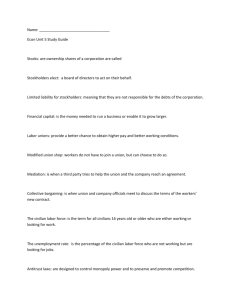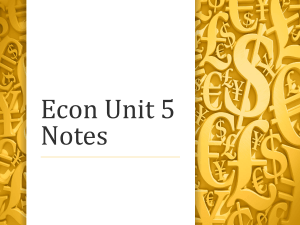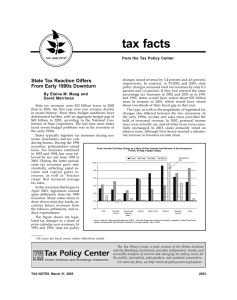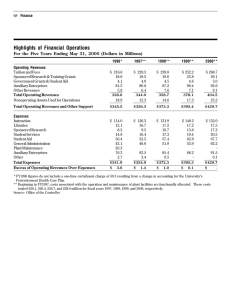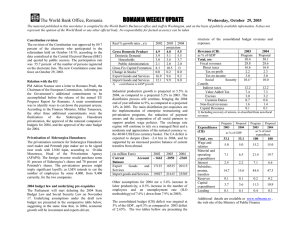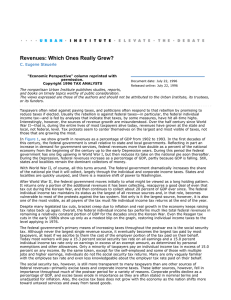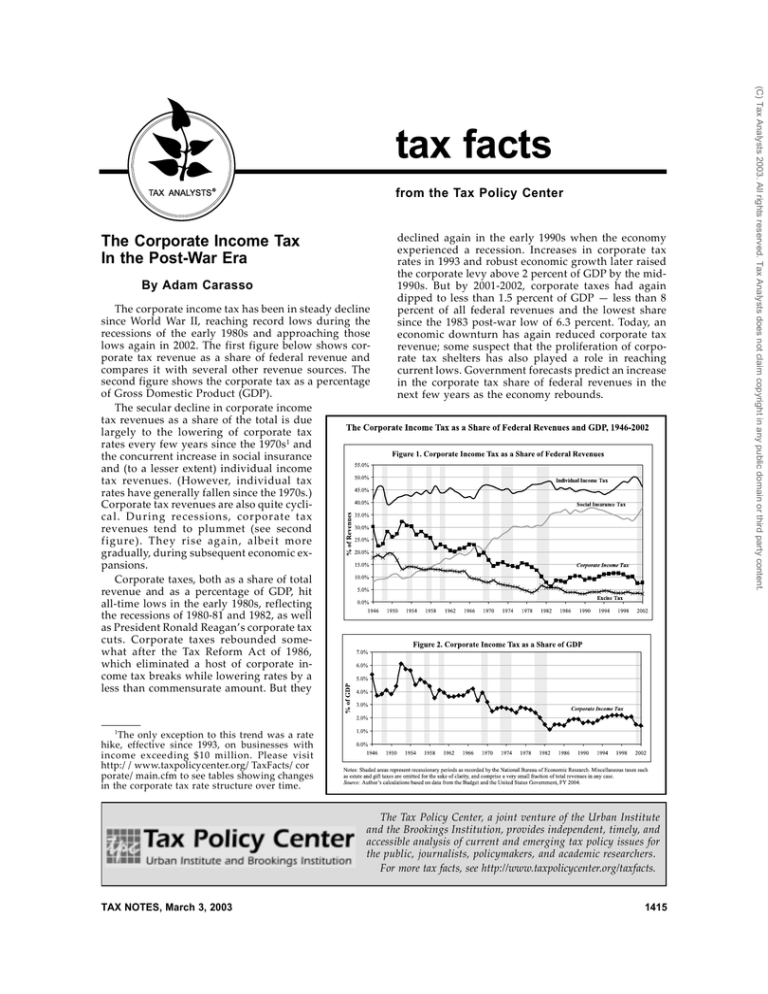
from the Tax Policy Center
TAX ANALYSTS ®
I.”
“W
b
p
th
en
licy
P
x
,T
rso
C
am
d
A
The Corporate Income Tax
In the Post-War Era
By Adam Carasso
The corporate income tax has been in steady decline
since World War II, reaching record lows during the
recessions of the early 1980s and approaching those
lows again in 2002. The first figure below shows corporate tax revenue as a share of federal revenue and
compares it with several other revenue sources. The
second figure shows the corporate tax as a percentage
of Gross Domestic Product (GDP).
The secular decline in corporate income
tax revenues as a share of the total is due
largely to the lowering of corporate tax
rates every few years since the 1970s1 and
the concurrent increase in social insurance
and (to a lesser extent) individual income
tax revenues. (However, individual tax
rates have generally fallen since the 1970s.)
Corporate tax revenues are also quite cyclica l. Du rin g re cession s, corporat e t ax
revenues tend to plummet (see second
fig ure ). Th e y ris e ag a in , alb ei t more
gradually, during subsequent economic expansions.
Corporate taxes, both as a share of total
revenue and as a percentage of GDP, hit
all-time lows in the early 1980s, reflecting
the recessions of 1980-81 and 1982, as well
as President Ronald Reagan’s corporate tax
cuts. Corporate taxes rebounded somewhat after the Tax Reform Act of 1986,
which eliminated a host of corporate income tax breaks while lowering rates by a
less than commensurate amount. But they
declined again in the early 1990s when the economy
experienced a recession. Increases in corporate tax
rates in 1993 and robust economic growth later raised
the corporate levy above 2 percent of GDP by the mid1990s. But by 2001-2002, corporate taxes had again
dipped to less than 1.5 percent of GDP — less than 8
percent of all federal revenues and the lowest share
since the 1983 post-war low of 6.3 percent. Today, an
economic downturn has again reduced corporate tax
revenue; some suspect that the proliferation of corporate tax shelters has also played a role in reaching
current lows. Government forecasts predict an increase
in the corporate tax share of federal revenues in the
next few years as the economy rebounds.
1
The only exception to this trend was a rate
hike, effective since 1993, on businesses with
income exceeding $10 million. Please visit
http://www.taxpolicycenter.org/TaxFacts/cor
porate/main.cfm to see tables showing changes
in the corporate tax rate structure over time.
The Tax Policy Center, a joint venture of the Urban Institute
and the Brookings Institution, provides independent, timely, and
accessible analysis of current and emerging tax policy issues for
the public, journalists, policymakers, and academic researchers.
For more tax facts, see http://www.taxpolicycenter.org/taxfacts.
TAX NOTES, March 3, 2003
1415
(C) Tax Analysts 2003. All rights reserved. Tax Analysts does not claim copyright in any public domain or third party content.
tax facts

